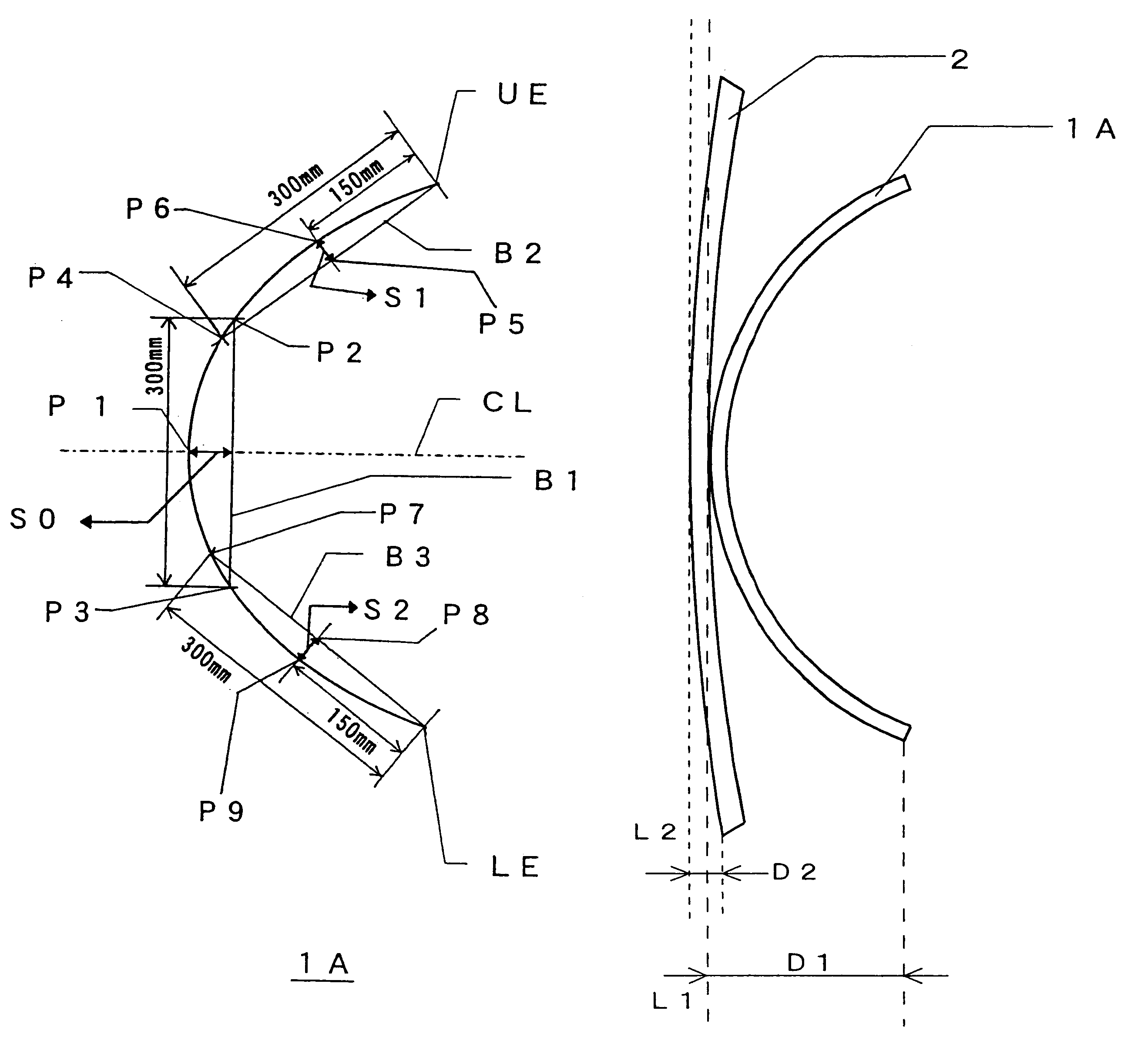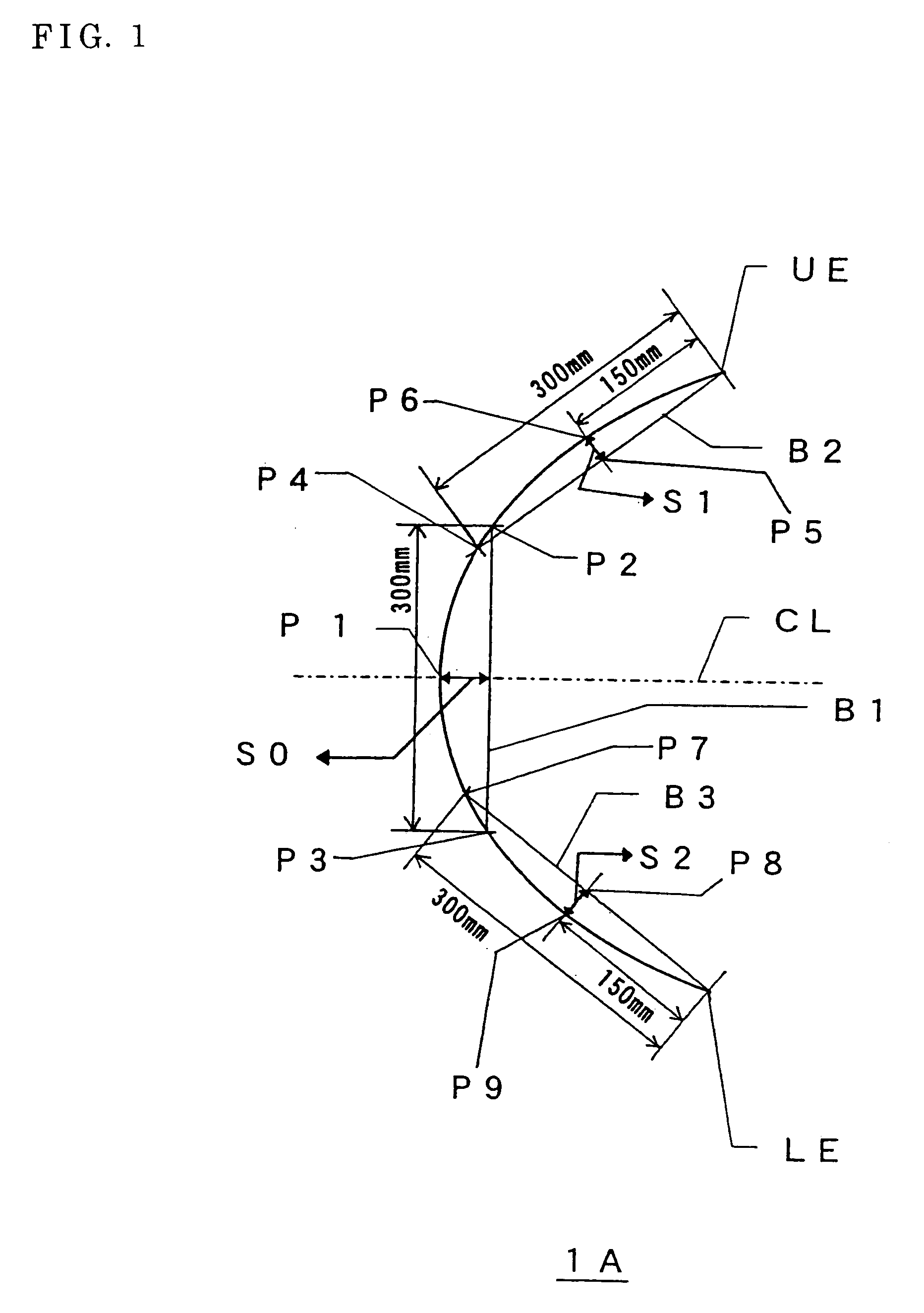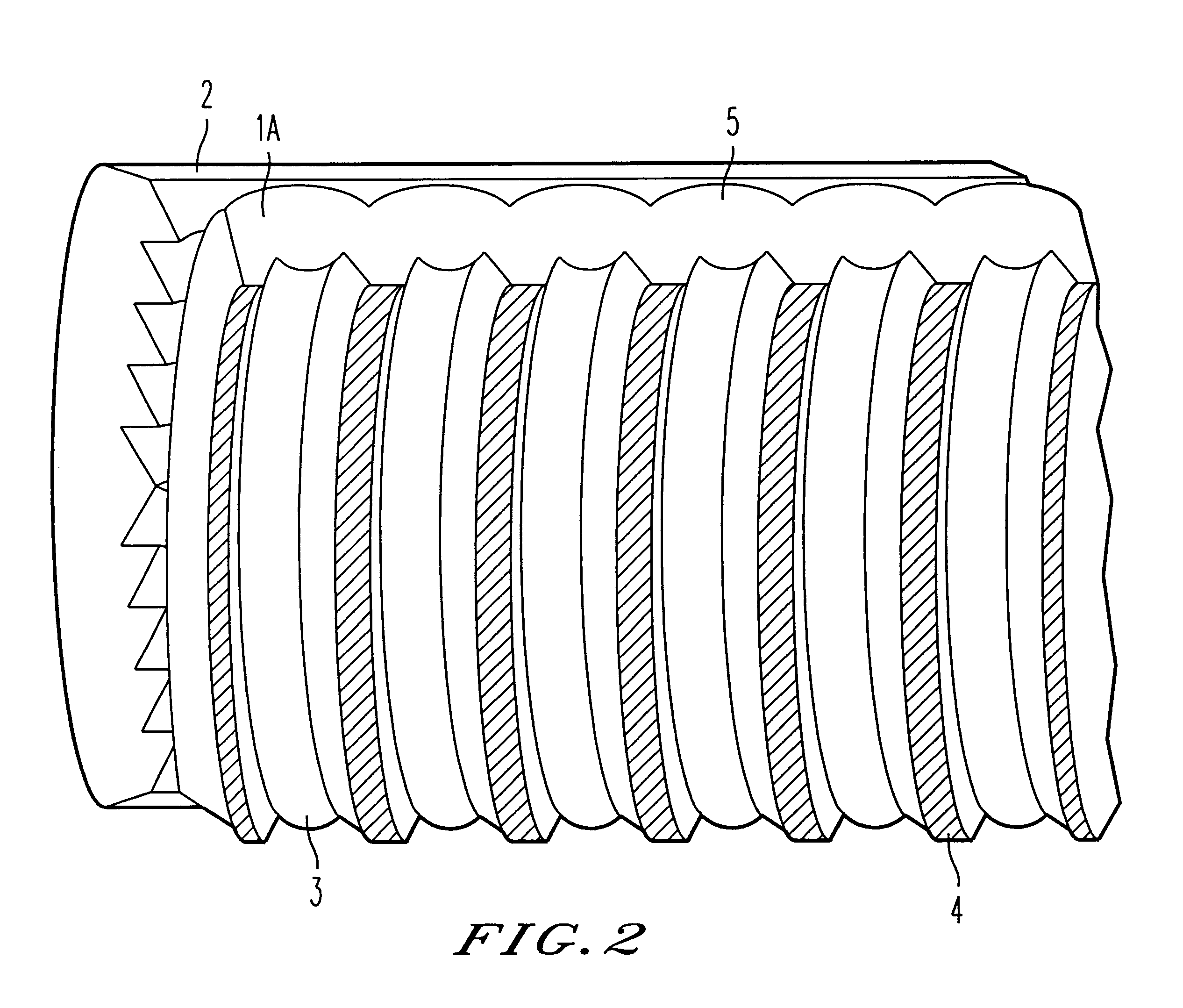Lenticular lens sheet
a technology of lenticular lens and lens top portion, applied in the field of lenticular lens sheet, can solve the problems of rubbing occurrence of a gap between the lens sheets, and rubbing was particularly likely to occur, so as to reduce the scraping of the fresnel lens top portion, the pressing force between the two lens sheets can be made high, and the effect of preventing the scraping
- Summary
- Abstract
- Description
- Claims
- Application Information
AI Technical Summary
Benefits of technology
Problems solved by technology
Method used
Image
Examples
working examples
Example 1
Warping was applied to a Fresnel lens sheet manufactured by forming a Fresnel lens pattern on a sheet of thickness 2 mm made of acrylic-styrene copolymer resin by the method of photopolymerization using a UV-hardening resin, such that the image light input side was convex (the magnitude of the convex warping of the Fresnel lens sheet (D2 in FIG. 3) was 10 mm). A lenticular lens sheet having warping of S0 of 14.7 mm, S1 and S2 of 9.2 mm as defined above was manufactured by inserting a lenticular lens sheet of thickness 0.9 mm made of acrylic resin into a warping mold and heating.
When a Fresnel lens sheet and lenticular lens sheet as described above were set in position in the frame of a television set such that the face that was formed with the Fresnel lens was on the side of the lenticular lens sheet, and a long-distance transportation test was conducted in which this was loaded on to a truck and transported for about 1000 km, no scraping of the Fresnel lens top portions or...
example 2
A lenticular lens sheet having warping of S0 of 9.0 mm, Si and S2 of 7.5 mm as defined above was manufactured by inserting a lenticular lens sheet of thickness 0.9 mm made of acrylic resin into a warping mold different from that of Example 1 and heating. When this lenticular lens sheet was set in position in the frame of a television set together with a Fresnel lens sheet identical with that of Example 1, the face where the Fresnel lens shape was formed being on the side of the lenticular lens sheet, and a long-distance transportation test and high-temperature high-humidity test were conducted in the same way as in Example 1, in each case excellent results were obtained just as in Example 1.
example 3
A lenticular lens sheet having warping of S0 of 22.0 mm, S1 and S2 of 17.0 mm as defined above was manufactured by inserting a lenticular lens sheet of thickness 0.9 mm made of acrylic resin into a warping mold different from that of Examples 1 and 2 and heating. When this lenticular lens sheet was set in position in the frame of a television set together with a Fresnel lens sheet identical with that of Examples 1 and 2, the face where the Fresnel lens shape was formed being on the side of the lenticular lens sheet, and a long-distance transportation test and high-temperature high-humidity test were conducted in the same way as in Examples 1 and 2, in each case excellent results were obtained just as in Examples 1 and 2.
PUM
 Login to View More
Login to View More Abstract
Description
Claims
Application Information
 Login to View More
Login to View More - R&D
- Intellectual Property
- Life Sciences
- Materials
- Tech Scout
- Unparalleled Data Quality
- Higher Quality Content
- 60% Fewer Hallucinations
Browse by: Latest US Patents, China's latest patents, Technical Efficacy Thesaurus, Application Domain, Technology Topic, Popular Technical Reports.
© 2025 PatSnap. All rights reserved.Legal|Privacy policy|Modern Slavery Act Transparency Statement|Sitemap|About US| Contact US: help@patsnap.com



